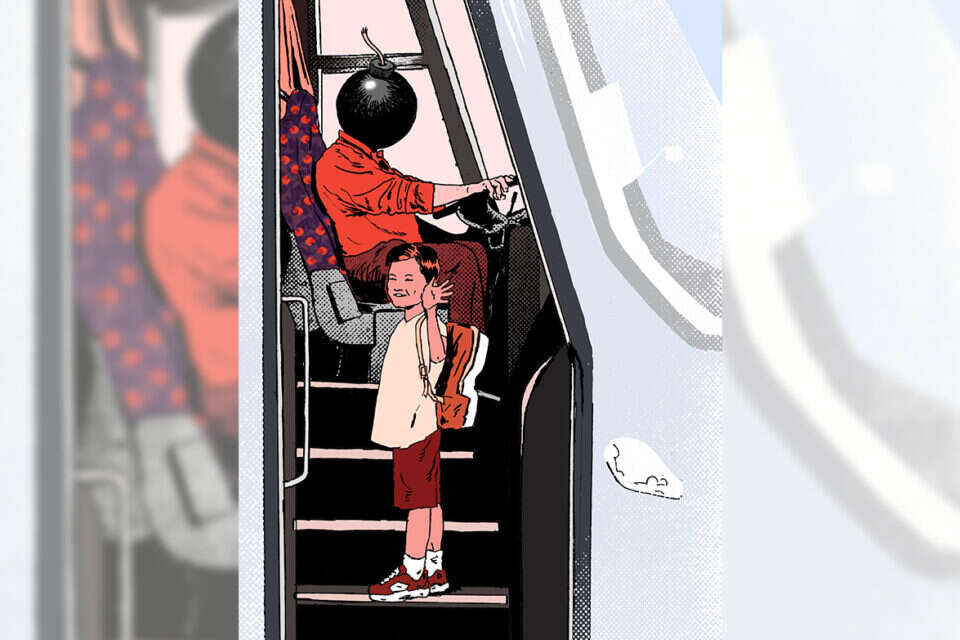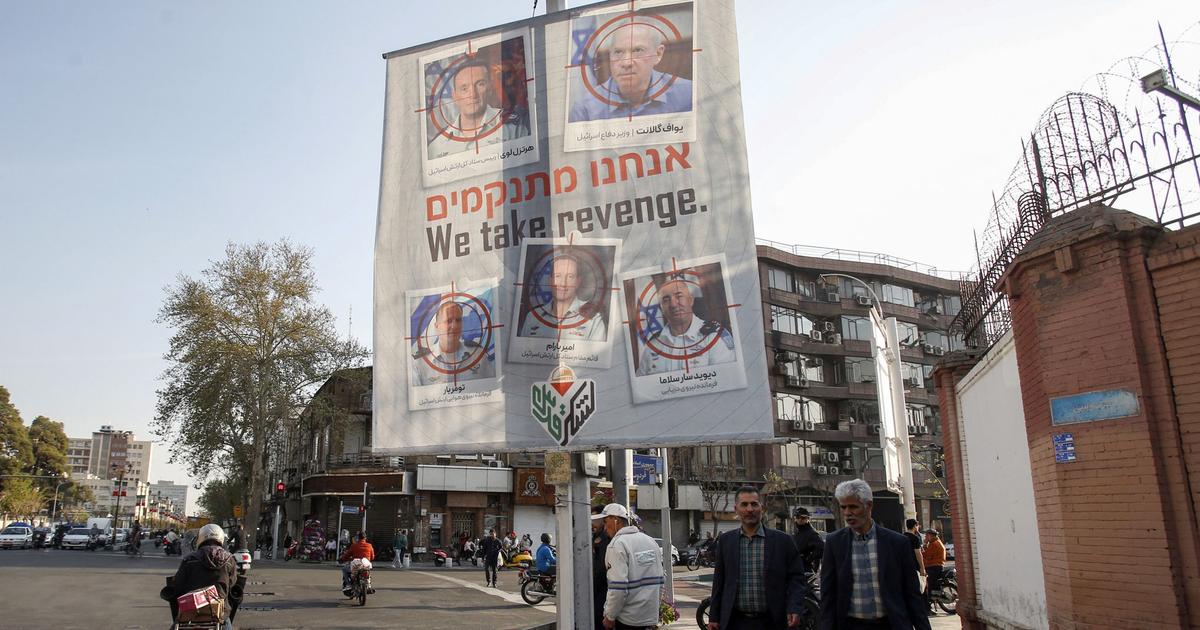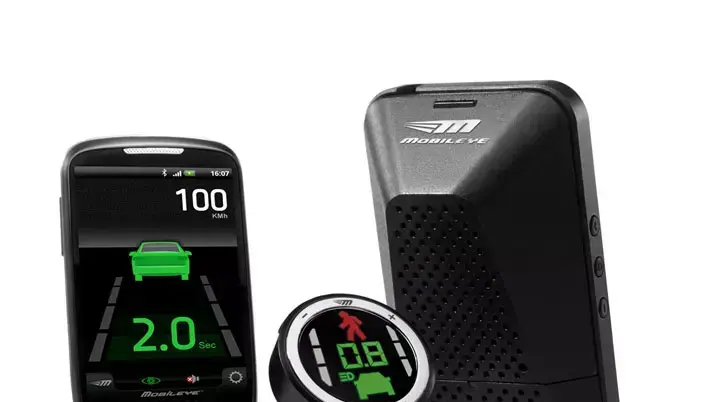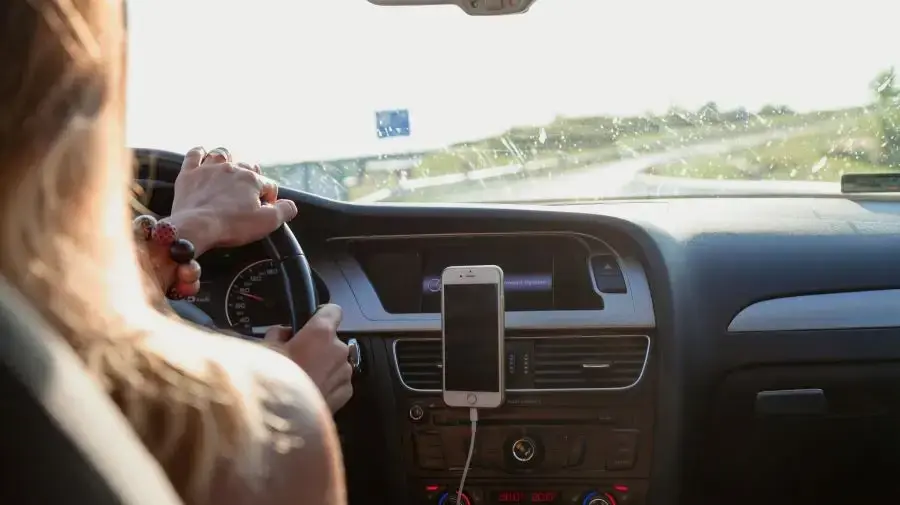When we send our children on a school bus or a trip of the youth movement, we have no idea who the driver will be behind the wheel.
Even the tour organizers do not know if there will be a young and inexperienced driver, or a veteran and experienced;
If he arrives fresh, or after many hours on the road;
How the children's behavior and noise during the trip affect him;
What is the technical condition of the bus;
What will be the road conditions;
more and more.
It is these parameters that often determine whether our children will return home safely.
23 Israelis were killed this year in accidents with a bus.
The most recent were Moran Ben-Eli, her children Dekel, Liam and Anel, and the bus driver Asher Besson, who were killed when Besson's bus deviated from its lane for no apparent reason and hit the taxi in which the Ben-Eli family was traveling.
The father, Reuben, was seriously injured.
In the decade between 2011 and 2020, there were 7,739 accidents in Israel involving buses and minibuses, of which 346 were fatal.
In a comparison conducted between OECD countries in 2018, Israel took first place, with 15.3 deaths per 10,000 buses in accidents;
The OECD average is 6.8 deaths.
This happens for many reasons, not all of which are related to the drivers themselves.
Transportation companies employ drivers in difficult conditions, at low wages, and often force them to work beyond the quota of hours allowed by law;
There is no adherence to safety procedures, and the digital tachographs, which were supposed to be installed this year on buses, were not installed;
Police do not catch the perpetrators, in part because of a shortage of manpower and a focus on other areas;
And the courts are firing drivers who are convicted criminals with relatively light sentences, allowing them to get back on the road quickly and be ticking bombs.
In recent weeks we have spoken with dozens of drivers, safety officers, police officers, traffic lawyers, and others.
All of them together paint a gloomy and dangerous picture, and share the view that if the state's approach to the phenomenon does not change, we will continue to see here serious accidents that deprive many of their lives.
Unfortunately, the next fatal accident in which a shuttle vehicle will be involved is only a matter of time.
"A bus accident has the potential to turn into a multi-casualty accident, and it's just like a terrorist attack," says Erez Kita, CEO of the Green Light Association. .
In addition, drivers are paid low wages, and some are forced to drive long hours beyond what is allowed by law.
"Some of the buses have life-threatening safety deficiencies."
About 20 percent of the accidents involving buses and trucks were caused by driver fatigue.
Regulation 168 of the Traffic Regulations stipulates that "a driver shall not start his working day driving until after a rest outside work for at least seven consecutive hours, shall not drive a vehicle for more than 12 hours in any period of 24 hours, and not more than 68 hours in any period of seven days "The driver shall stop driving for at least half an hour during any driving period of four consecutive hours."
The scene of the fatal accident on Route 89 a month ago.
Chairman of the Public Transport Drivers' Association, Israel Ganon: "A three-second distraction is enough", Photo: David Cohen, Ginny
Hours at the wheel
But anyone who knows the world of transportation says that installation is perceived by many companies as a recommendation only.
Israel Ganon, chairman of the Israel Public Transportation Drivers' Association at the Histadrut, describes one of the loopholes in the regulation: "It is written that a half-hour break is required after four hours of driving.
But then the safety officers come and say, 'It is not written that this should be a continuous break.'
I told them: 'Immediately say that every stop at a red light is a minute of rest.
The driver stopped at 30 traffic lights, and here he took a break. '
"About two years ago, we contacted the deputy director of the Ministry of Transportation, who issued a letter supporting half an hour in a row.
But at the end of the letter he wrote: 'The final interpretation is given to the court'.
You're the regulator, and you're throwing me back in court?
What happened in the accident on Road 89?
A three-second distraction is enough.
"A driver is perhaps the professional with the greatest responsibility on his shoulders. He has an even greater responsibility than a surgeon, because a careless surgeon hurts one person, and an unfocused bus driver can hurt many. They will say: 'But he does not drive all day, he "Rest between driving." It's just that this 'rest' is not in the living room at home, but in a gas station or in some grove. And it's sometimes more tiring than the driving itself. "
"Business is deteriorating."
Israel Ganun, Photo: Drivers' Organization
"Regulation 168 is subject to interpretation and is not unequivocal in the way it is written," adds Anat Ginio Aviram, director of the Vehicles and Enforcement Division at the National Road Safety Authority (RALBD). And the drivers' unions, to fix it to suit the working conditions of 2021 and reduce driving hours. Today it is not clear what is defined as rest and what is waiting or car care, and there are all sorts of other nuances. Therefore, even if you read the installation ten times, you will understand something different each time. "
Rivka Makhlouf (55) worked for nine years as a bus driver on public transportation.
Three years ago, she moved to a taxi in the Rosh HaAyin area.
"The situation of public transport drivers is getting worse year by year," she says.
"There is overcrowding in the definition of the lines. If you leave the first station at 11:45 and arrive at the final station at 12:20, at 12:25 you already leave for another line. We do not even have a break for lunch. No toilets, no water, no Several times I got out of the house at 4:30 in the morning, and until 12 noon I did not put a crumb in my mouth.
"I went to the usher and told him, 'There are two options. Either I'll have an accident and people will die, or you'll give me a break. Decide.'
"Even today I see drivers who do not stop at stations, to gain this time during the break at the end of the line. They just move the digital number in front of the bus to 00 and pass the most critical station - for example, near a hospital. Why get into this situation?"
"Density in lines".
Rivka Mahlouf, Photo: Efrat Eshel
The driver of the shuttle car killed on Route 89, who was the late Besson, was 76 at the time of his death. For the renewal of the license in public transportation, a certificate of medical qualification from a family doctor and a certificate from an optometrist are required.
"The average age of drivers increases from year to year," says Nissim Seroussi, owner of Maya Tours and chairman of the Israel Transportation Association. "If the state allows a 76-year-old driver to drive, that's fine with me.
If she decides to drive only until the age of 60, then that will be the case.
It's not in my hands. "
"Attacked Drivers".
Nissim Seroussi, Photo: Transportation Organization
There are not enough drivers
"Roving off the road because of age can not be done in a sweeping way, because life expectancy is rising, and the situation of bus and shuttle drivers is not what it was a decade or two ago," says Anat Ginio Aviram. "There is an entire population, which once you disqualify from driving, you deprive it of independence.
"When it comes to drivers who drive children, there is room for a spot check and more care, but at the moment there are no restrictions in the law."
On the other hand, many veteran drivers point out that there is no substitute for the experience gained over the years.
"Age equals recognition of the roads in the country, greater patience, and also greater skill in how to get out of extreme situations," explains Israel Ganon, chairman of the Public Transport Drivers' Association.
There are no courses, and no simulator where you can experience driving.
"How does a pilot gain experience? Not from air battles, but from simulator training. I've been a bus driver for 20 years, and four years ago I set up a professional organization, just for these things. I felt no one cared, and I saw the business deteriorate."
The large number of older bus drivers is also related to the severe shortage that prevails in the industry.
It is estimated that between 3,000 and 4,000 drivers are currently missing from the market, while the number of passengers is only growing from year to year.
"The shortage of drivers is causing bus companies to make an effort to produce a service with the help of existing drivers, which probably harms working conditions," says David Kantrovich, a transportation planner who served as director of public transportation on the Jerusalem Transportation Master Plan team.
"Today, drivers have to do everything much faster, and with fewer breaks, with the Ministry of Transport constantly pushing to add service and also providing budgets, but there is a gap between the service it seeks to be able to perform. Buying buses is easy, but getting people to be drivers is much more complicated".
"One of the main reasons for the shortage of drivers is the training time," says Seroussi. "Today, to get a bus license, from the moment you say 'I want' until you have a license in hand can take a year. You have to get approval from health centers and wait until a course starts, and people are reluctant and give up. Potentials are looking for other alternatives. "
Sefi Dayan, acting chairman of the Association of Safety and Transport Officers who worked for decades as a bus driver and as a safety officer in the Lev Hasharon Regional Council, believes that there is a serious problem in training drivers.
"It is not enough to get a bus driver's license. You also need to know how to control the bus even in an emergency. Bus drivers in the country are unprofessional, do not teach them the secrets of the profession. It's like teaching them first grade math and English up to letter D. "Drivers sometimes train and press the brake while driving, and they would panic and ask, 'What happened?'"
"The driver is not a teacher"
One of the difficult problems that shuttle drivers encounter is the behavior of the children in the vehicle.
"When I would do transportation for children at the end of the school year, I would greet 'the reward'," says Israel Ganun.
"I will show you what drivers sent me after the accident on Route 89. They said that they drove campers in youth movements and said: 'We drove with them once and do not want more, do not want to lose their lives.'"
What do you mean?
"The driver is not a teacher. He will not start shouting during a 'boy, sit' ride. Do you know what it is for him to see a child's head outside the window in the middle of a ride? A heart attack on the spot. You are like the responsible adult, but you also drive. Everyday life, which everyone has - is a sure recipe for an accident.
"I turned to youth movements and asked that each one select a few adult trainees, that we train them to be safety trustees, mentors and liaisons with the drivers. A safety trustee can make sure everything is in order and make sure the children are strapped in and not disturbed."
Seroussi: “Think of 50 students gathered in the same vehicle and traveling to a school that is 20 miles away. These are 30 minutes in a closed vehicle with children who are often unsupervised. Someone has to drive this ride, and it's not the driver. We turned to the Ministry of Education, and were told that there is no obligation for an adult mentor. So if there is an immediate correction that needs to be made, I would require the presence of a responsible adult in every transportation of children and teenagers. "
Seroussi also reports cases of violence against shuttle drivers by passengers, sometimes also teenagers.
Just earlier this month, two boys punched a bus driver of the Nativ Express company in Nahariya, after asking them to wear a mask.
“Any case like this, where a driver is attacked, lowers the potential of new drivers by at least a percent or two,” Seroussi says.
"A driver wants to return home safely, not to get to the emergency room at the end of the day. There used to be no such incidents. Who would dare raise a hand on a bus driver? It happens because of a sense of part of the public, allowing himself, because it's just a driver."
Israel Ganun: "When you travel to Eilat in your private car, with three children full of adrenaline in the back, it is not easy. Now think that you drive four hours, arrive in Eilat, rest for half an hour, return to Tel Aviv, rest for half an hour and travel to Eilat again. Do it "Every day, and not with three children, but with 50 people, on a crowded bus and in traffic jams. After all, it is almost impossible work."
To the harsh working conditions of drivers should be added the low wages.
A driver on public transportation today earns 43 shekels an hour, and in the transportation companies, the picture is even gloomier.
According to the Public Transport Drivers' Association, a bus driver earns about 30 percent less than the average wage in the economy, while in the EU the wage is 5 percent less than the average.
In the United States, by the way, it is 16 percent higher than average.
"After 40 years of driving a bus, if I had another profession today, even a guard at school, I would go," says Amir David, 58, a driver for United Tours.
"As soon as I get up in the morning and get 36 shekels an hour, I drive during the day and cry. Last month I did 154 hours at the wheel. Double that by 36 shekels gross, and say if it is possible to support a family like this."
"Driving and crying."
Amir David, Photo: Arik Sultan
No "black box"
For more than 15 years, the state has been trying to introduce digital tachographs to buses in Israel - a kind of "black box" documenting driving.
The device records the distances traveled by the driver in continuous driving during the day, week and month, the speed of travel and the times of stopping and resting.
It also allows drivers to be monitored online.
Each driver accumulates personal data that cannot be deleted;
If he has committed an offense, it can also be found in the records a year later.
Earlier this year, the Knesset's Economics Committee approved that new heavy vehicles would be required to install the digital tachograph, and that in older vehicles the transition would be gradual.
However, it is stipulated that the regulations will enter into force when Israel accedes to the EU Treaty, which requires the installation of a tachograph as part of the European standard.
This procedure was supposed to happen within half a year, but has not yet happened.
Today there are new buses arriving in the country with a digital tachograph already installed, but the device is already being delivered at the port - as it has not yet been approved for use.
An analog tachograph is installed in its place.
"It's like the difference between an iPhone 13 and a dial-up phone," says a source in the transportation industry.
"The analog tachograph data can be forged."
Anat Ginio Aviram of the Ralbad says that "work is being done to put the digital tachograph into use soon, but I do not currently expect exactly when.
It is on the table and depends quite a bit on decisions regarding Regulation 168. Because the tachograph must know what the definitions of rest time are and how many hours the driver is supposed to work.
There are complex interests here: employers want as much work as possible, and drivers and safety people - as little as possible.
Everyone pulls in his direction, and in the end we have to reach a wording that is acceptable to everyone. "
According to Israel Ganon, "The digital tachograph will be like a personal card that the Ministry of Transportation will issue to every driver. With this close monitoring, the driver will already commit fewer offenses. The effect will be like a traffic light camera: when there is a camera, no one passes in red. "In Brazil and Thailand."
The safety officers are responsible for the transportation companies for enforcing regulations and ensuring proper driving.
But their powers are also limited.
"The job of the safety officer is to monitor that the driver is healthy, that he has a valid license and that he is following the provisions of the law," explains Sefi Dayan.
"As a safety officer, I only know about the driver's past in the last five years, not about offenses he has committed before. I fought in the Knesset, and they explained to me that the information is forbidden because of the privacy of the individual. Why? "Should not be visible? My driver can drive to a wedding night in his private car, get drunk, be caught by a police officer and have his license revoked - and I will not know about it unless he reports."
"Knowing how to control an emergency."
Sefi Dayan, Photo: Gilad Artzi
"Great on the Traffic Division"
The police are responsible for the day-to-day enforcement on the roads.
But here too too little is happening.
"It's big on the traffic division," says (retired) Yaron Barry, who served until about five years ago as head of the division.
"There is not enough mobility on the road, and it affects both enforcement and deterrence. In the world, when you see a vehicle, you are more careful. You will walk around the country, north and south today, and you will simply not see mobility.
"When I was on duty I visited Georgia, patrolling the highway. The number of residents there is about the same as ours, but the number of police vehicles is two or three times higher than ours, and there are also 15 helicopters. They look much more significant."
"There is not enough mobility."
Yaron Barry, Photo: Dudi Vaknin
Sen. Guy Levy, head of the traffic section of the Traffic Division of the Israel Police, disagrees. "With what the National Traffic Police and the Traffic Division have today, we are doing an excellent job, in my opinion.
It is clear that if there are more standards it will be fantastic, because when a driver sees a vehicle in the field, he immediately recoils.
"Our focus in general is on life-threatening offenses and road bullying. In terms of bus offenses, check back five years and see that there is the same enforcement."
We checked.
In the last five years, more than 126,000 traffic reports have been recorded for bus and shuttle drivers. In 2017, 24,976 reports were recorded, in 2018 - 25,100 reports, in 2019 - 24,512 reports, in 2020 - 22,360 reports "Hut, and by the end of August this year - 14,585 reports.
Most of the reports were about using a cell phone while driving, deviating from the lane, stopping traffic, speeding, driving at a red light and depriving road users of their rights.
Convicted - and back on the road
Beyond the bus drivers, an important question is whether there is also police enforcement against the company owners.
"This is already a vicarious liability," says Sen. Levy.
To blame a company owner you need more meaningful content - for example, on the issue of vehicle integrity, or drivers complaining about managers forcing them to work longer hours.
"Drivers today know exactly what is allowed and what is forbidden. Company owners and executives have understood this and are careful about these things, because it is still human life. I do not think there is a company owner today who wants his driver to drive 16 hours and be involved in a fatal accident."
One of the allegations that arose after the accident on Route 89 was that even drivers with multiple convictions do not receive satisfactory penalties, and return to the road after a relatively short time.
The bus driver in the accident, Asher Besson, had 51 previous convictions, but most were for technical offenses, not those that endangered human lives.
Besson issued his bus driver's license in 1974, so he had 47 years of experience in the profession.
His license at the time of the accident was valid until mid-November '21, and according to the tests of the traffic examiners, he drove at the bend before the accident at a speed of 50 km / h, which corresponds to the road conditions.
In contrast, experts on the subject mention the fatal accident that occurred in mid-February 2016 on Highway 1, when an Egged bus collided with a crane truck parked next to Highway 1 after the Latrun Interchange, and six people were killed.
The RALBD appointed a multidisciplinary committee of experts to investigate the accident. It turned out that the driver, Haim Bitton, was fired from another public transportation company in 2010, following an accident in which he was involved on Road 443. A year later, he started working at Egged.
In 2013, Bitton was involved in another accident, in which 18 people were injured.
He was prosecuted, and as part of a plea deal, he was sentenced to 45 days of license disqualification, 120 hours of community service and a NIS 500 fine.
Egged decided to transfer him to another position, although professional sources recommended Petro.
Until the accident in Latrun in 2016, no less than 29 reported accidents were recorded in Bitton's resume, along with 20 complaints from civilians.
After that accident he was convicted in a plea deal of six offenses: causing death by negligence, negligent driving, driving at an unreasonable speed, failure to slow down or stop, driving off-road, reckless and negligent acts.
He was sentenced to four years in prison.
Egged Transportation's safety officer and former Dan safety officer, who testified before the inspection committee, admitted that due to the significant shortage of public transport drivers, the companies are not firing dangerous drivers.
In February 2017, the committee submitted its recommendations to the Ministry of Transport, stating that "the shortage of shuttle drivers on public transportation should be addressed as soon as possible and the driver's empowerment and remuneration should be examined."
Superintendent (retired) Barry: "Think of a traffic cop, who for years does his job - deciphering a serious accident, bringing the culprit to court. After a four-year trial, the offending driver goes free like a king. If you were in place of that cop, you would have Motivation to do the job? "
Shuttles.
Retired traffic attorney and judge Asher Arbel: "The policeman does not register - and thus there is no case", Photo: GettyImage
"Deterrence? Nothing"
The rulings given by judges in traffic cases also depend on the way the police present the case in court.
The negligence of the police often results in the acquittal of the defendants.
Take, for example, the case of Y., a truck driver, who was caught driving for more than 12 hours in a 24-hour period, in violation of Regulation 168. The police submitted to the Petah Tikva traffic court the tachograph data installed in the truck, but the disk containing the data - which is to be submitted to the court with a certificate of a public servant confirming that it has been properly preserved and maintained, and that no change has been made to it - has not been submitted as required.
The police officer who submitted the material did so without a public servant certificate, and did not attach a document deciphering the tachograph records.
Judge Erez Nourieli was forced to rule that the weight of the testimony was nil, and the defendant did not even have to plead guilty.
"Twenty years ago, police officers were full of purpose, and when they brought a case to court, it was glorious, including adherence to evidence and testimony," said Advocate Asher Arbel, who specializes in traffic law, who previously served as a judge in the field. But sometimes I come to court and see that the quality of the goods is good for the neighborhood supermarket, but not for State Square.
"I recently received a case in which the officer claims the driver escaped and did not stop at a red light at seven traffic lights. To describe an offense of crossing at a red light, the officer must write in a data report such as the traffic light location and where the driver was at the light exchange.
Otherwise, maybe the red light was replaced when the driver was already inside the intersection?
There are components of offense that need to be provided.
"During the hearing I asked the policeman 'how many meters was the driver from the line?', And he says he does not remember. I ask 'Where did you first see him? Where is it registered?', And he did not register.
"Beyond that, a judge has to have a sorting eye. He has to see who the man in front of him is, and if he has a chance at rehabilitation. I served as a judge during the Habonim disaster in June 1985, when a bus that was on an annual trip got on a train and 22 people were killed. I told myself. That the next day there will probably not be a single accident, and the cops will die of boredom. After two days a package of offenses arrived, and they told me: 'You will not believe what accidents were today'. Deterrence? Nothing. "
"Need a sorting eye."
Asher Arbel,
"It's time for reform"
It so happens that a bus driver in 2021 is often a worn-out driver after many years of work, resentful of the low wages, nervous from the poor working conditions and tired from long hours at the wheel.
It ends in fatal accidents.
"As a driver, when you start a day's work in the morning, everyone is on you," says Amir David of United Tours.
"The Israel Police on you, the school principal on you, the safety officer on you, everything on the driver's head."
Israel Ganun: "Bus drivers must be given the optimal professional tools, because in the end it is all a matter of human error that ends in disaster. Care must be taken not to blame only the SAG, the driver.
It's not that the driver is innocent - but where's the safety officer?
Where is the company?
Where's the bus itself? "
"Raising awareness".
Erez Kita, Photo: Israel Hadari
Erez Kita, CEO of the Green Light Association, points the finger of blame at the Ministry of Transportation.
It is time to carry out a profound reform in everything related to mass transportation in Israel. "
Ministry of Transport: "Special budget has been allocated for the training of drivers and bus drivers"
ממשרד התחבורה נמסר: "המשרד פועל באופן מתמיד לשיפור מעמדם של נהגי ונהגות האוטובוס ולהסדרת תנאי העסקתם. עם כניסת השרה מיכאלי לתפקידה, הנושא קיבל חשיבות משמעותית, והמשרד הקצה תקציב ראשון מסוגו של 220 מיליון שקלים להכשרת נהגות ונהגי אוטובוס ולשיפור תנאי העבודה, ובהם רפורמת עלייה מכל דלתות האוטובוס וצמצום התשלום במזומן, התקנת מחיצת מיגון לנהגים באוטובוסים, הוספת נתיבי תחבורה ציבורית בכל הארץ והקמת כ־70 מבני רענון לנהגים ולנהגות ברחבי הארץ.
"כיום יש בישראל כ־70 אלף בעלי רישיונות נהיגה לאוטובוס ולרכב ציבורי. במטרה להגדיל ולזרז את שילובם של הנהגים בחברות התחבורה הציבורית, פעל המשרד לזירוז הליך ההכשרה. רשות הרישוי הציבה בוחני נהיגה מעשיים בחברות התחבורה הציבורית הגדולות, כדי לזרז את הליך הבחינה בחברות. ניתנה עדיפות לבדיקות רפואיות במכון הרפואי לבטיחות בדרכים לנהגי האוטובוסים, וכן במשרדי הרישוי ובמבחני הנהיגה המעשיים, למבקשים ולמבקשות להוציא רישיון נהיגה על אוטובוס.
"במסגרת מכרזי משרד התחבורה, מפעילי התחבורה הציבורית מחויבים לבצע השתלמויות לנהגים בכל שנה, הכוללות בין השאר נושאי בטיחות, נגישות ושירות. בנוסף, המשרד מקדם שינוי חקיקה, המחייבת לנהוג עם חונך על האוטובוס בעת כניסה לתפקיד כתנאי להעסקה בחברות הסעה ציבורית. דגש מיוחד ניתן לנושאי ההדרכות לנהגי ולנהגות אוטובוסים, במטרה להעלות את תודעת השירות שלהם, לרבות סיוע לאנשים עם מוגבלות. ההדרכות יבוצעו אחת לשנה במכללות שנבחרו בהליך תחרותי.
"נהגי התחבורה הציבורית אינם מועסקים על ידי המדינה, ומכאן שהיא אינה קובעת את תנאי העסקתם, הנקבעים באופן בלעדי בהסכמה בין הנהגים למעסיקים. עם זאת, במכרזי התחבורה הציבורית שמפרסם המשרד ניתן דגש מיוחד על תנאי ההעסקה. שיפור המכרזים ייבחן בשנה הקרובה, כדי לחזק דגש זה.
"באשר לשעות נהיגה ומנוחה לנהגים, יצוין כי על פי התקנות, נהג אוטובוס מחויב בחצי שעה הפסקה לפחות בכל ארבע שעות של נהיגה. שעות הנהיגה והמנוחה של הנהגים מפוקחות על ידי קציני הבטיחות המועסקים בחברות, ובקרוב גם באמצעות הטכוגרף הדיגיטלי, שייכנס בסוף שנת 2022 לשירות בכל האוטובוסים והמשאיות.
"קציני הבטיחות בחברות מחויבים לבדוק באופן שוטף את הטכוגרפים של כל הנהגים בחברה ולדווח על כל חריגה לגורמים הרלוונטיים, ובכללם גם למשרד התחבורה. אי עמידה בתקנות מהווה עבירה פלילית ומטופלת הן במישור המשמעתי והן במישור המשפטי, באמצעות העמדה לדין בבית משפט של כל נהג שעבר על הוראות החוק.
"באשר להסעות התלמידים לבתי הספר: הסעות אלו מבוצעות באמצעות חברות הסעות שזכו במכרזים של משרד החינוך ומפוקחות על ידי משרד החינוך והרשויות המקומיות".
צילומים: ישראל הדרי, אריק סולטן, אפרת אשל, דודי ועקנין, ארגון חברות ההסעה בישראל, גלעד ארצי, הסתדרות לאומית
shishabat@israelhayom.co.il









